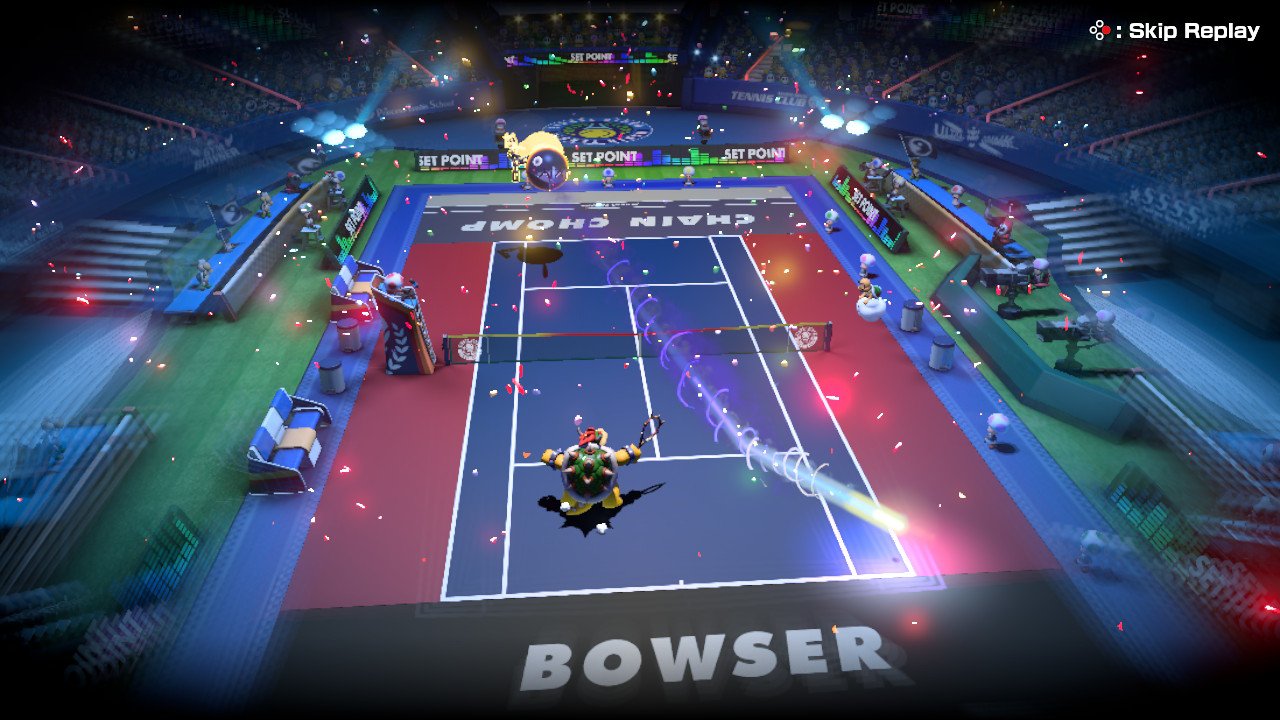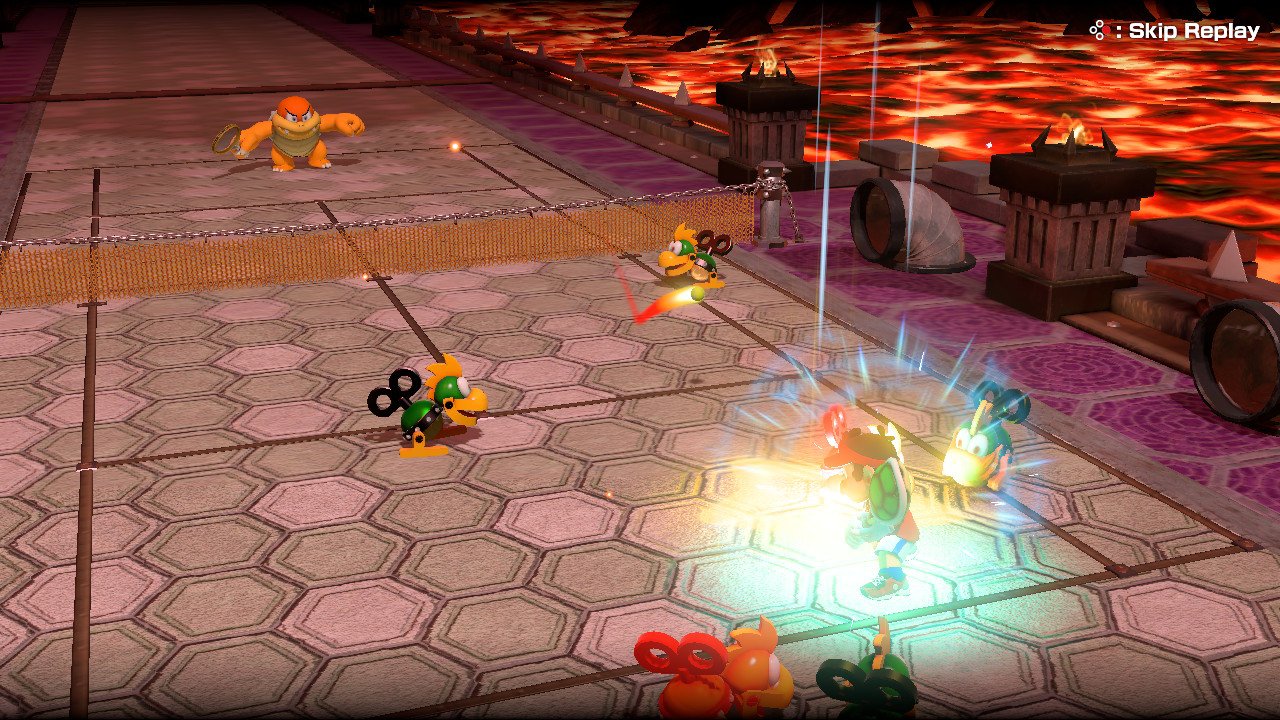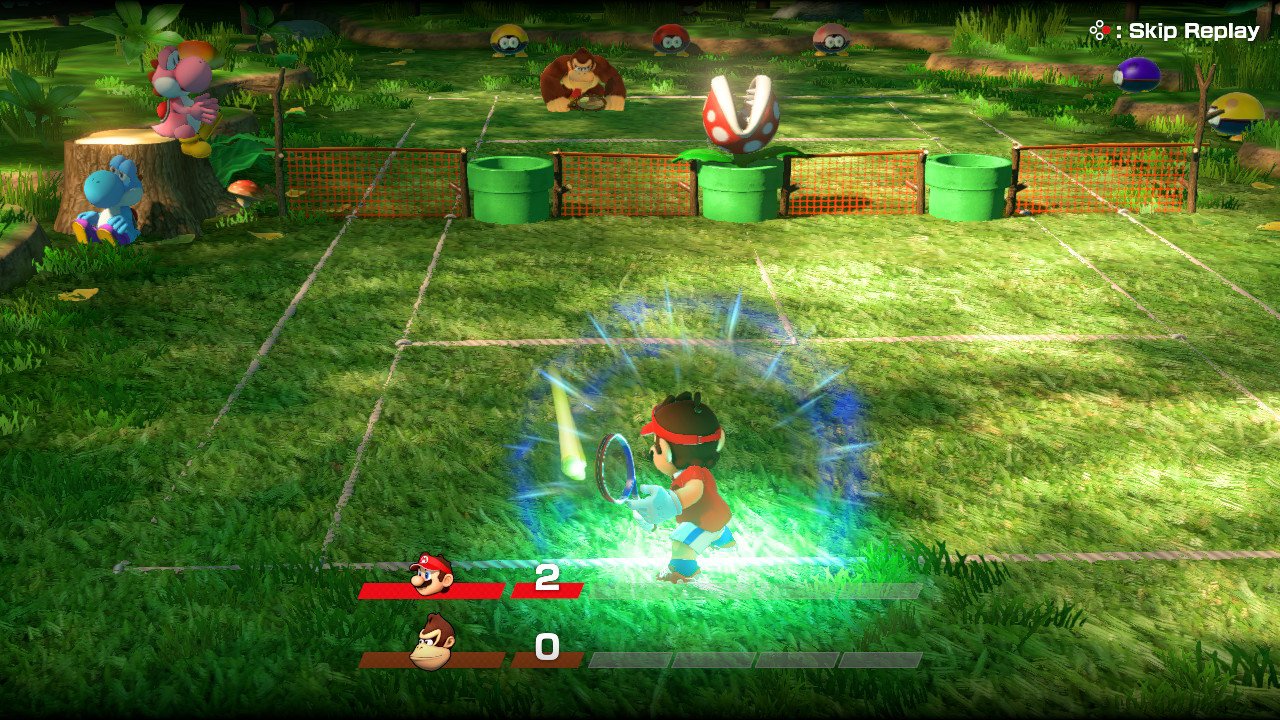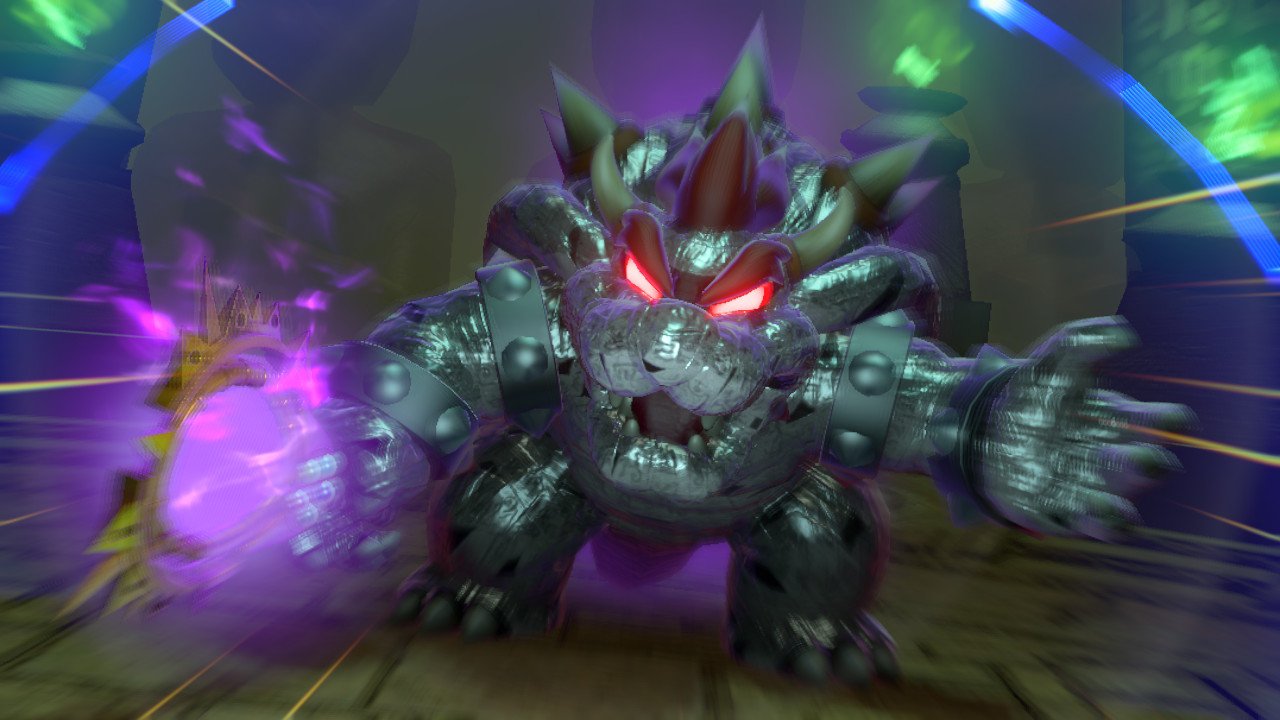Mario Tennis Aces review: smashing shots failed by flimsy game modes

Mario Tennis Aces for the Nintendo Switch is less about angling the perfect topspin forehand down the line and more about standing in a star, leaping 20 feet in the air and smashing the ball at Bowser’s face. It’s a flashy arcade tennis game with plenty of special moves to master, and playing against someone that’s the same skill level as you is one of the most tense, frantic multiplayer battles you’ll have all year.
And yet after less than 15 hours with it, I have no desire to return. That’s because those excellent mechanics are wrapped in wafer-thin game modes that do nothing to keep you coming back. The main single-player offering, Adventure mode, tries to be a fully-fledged story with RPG elements, but it’s too short and repetitive, and while the multiplayer fares better, it lacks the variety that you’d expect from any sports game.
You can not be serious
So on balance, is it worth your time and money? Let’s start with the good bits: the actual tennis. On the court it’s hard to win if you try to manoeuvre your opponent around and control the angles like you would in other tennis games. Regular shots don’t have much power, and unless you really wrong-foot an opponent they’ll be able to return your best efforts.

The key is pulling out an array of special moves. If you flick the right stick for a Trick Shot then you’ll cartwheel across the court—each character has their own animation—and send the ball back with heavy spin that can catch your opponent off guard. Drop shots can be effective, too, especially if you’re pinning the other player back behind the baseline.
The real heavy hitters are the Star Shots and Zone Shots. Charge up a normal shot by holding down the corresponding button early and you’ll fill up your power meter. Get it to a third or more filled and stars will appear on the court, and if you stand in one then your next stroke will gain extra zip, potentially winning the point.
You can also tap the right trigger while in the star to start a Zone Shot, spending energy to leap into the air, pause, and slam the ball down with enough force to break your opponent’s racket (which can actually happen). It’s a fantastic spectacle that sends a rainbow of sparks across the court.

The rallies don’t just look great, either. They’re balancing acts in which you have to think fast and make mental trade-offs with every stroke. Trick shots are arguably the most effective shot in the game because they’ll never create a star for your opponent to use, but you have to be far away from the ball to pull them off, which is a risky business. Time it right and they’ll also fill up your power bar—but it’ll deplete if you initiate the shot too late.
Sign up for breaking news, reviews, opinion, top tech deals, and more.
Likewise, it’s tempting to try a Zone Shot to win the point when stars start showing up. But you also want to conserve energy: you can spend power to slow down time instead, which could get you out of a sticky situation later. Opponents can block your Zone Shot if they time it right, neutralising them completely. When these decisions string together it’s a mesmerising back and forth, each player predicting what the other will do next and then countering with split-second choices.
Foul modes
It’s genuinely one of the most fluid sports games I’ve played. But as I mentioned, its game modes never capitalise on that potential. In Adventure mode, you must rescue Luigi from an evil tennis racket by collecting five power stones, each of which is guarded by a boss. It’s as bonkers as it sounds, and is filled with cutesy Mario charm. Sadly, it gets repetitive fast.

I loved the first hour: the game mixes regular tennis matches with some fun minigames that test your accuracy and movement. But save for a handful of standout challenges—I loved playing on a court on the deck of a ship, complete with mast that could change the direction of your shots—they follow the same patterns throughout.
For example, you’ll play a target practice minigame several times. It’s as simple as knocking down rectangles on the other side of the court, taking care to aim at the targets with stars on them when possible. The only meaningful change it makes from one time to the next is that you need a higher score to pass, which reflects a lack of imagination.
You’ll notice the same tricks repeating themselves in less obvious ways, too, most notably in the boss battles, which each follow the same pattern. Deflect tennis ball-style projectiles, dodge some flailing arms and then smash a ball at the weak spot. Job done.

That repetition makes Adventure Mode feels more like a giant tutorial than the standalone single-player story that many were hoping for. That’d be fine if the meat of the game was elsewhere, but it’s not. The tournament mode is just as disappointing. There are only three cups to compete for against the CPU, each of which require you to beat three opponents to win. The structure puts me in mind of the classic four-race Mario Kart cups, but there’s far less replayability here.
You can’t change the difficulty level, which is a real shame, because it’s simply too easy to win. You’ll breeze through most matches, and if you lose you can simply restart and play until you win. In the short time it took me to win the three cups, I was only bested by two opponents, one of them early on when I was still learning the ropes, and one being the final opponent in the final cup.
Verdict: Play it
I had high hopes for online play, which should be the perfect playground to let the mechanics shine. And to some extent it is—you match quickly with opponents and play one rapid best-of-three set. But the lack of depth kills the enjoyment again. Away from exhibition games in Free Play, it only offers a simple tournament format that you play over and over again. Beat five opponents in a row and you’re the champion, at which point you’re booted back to the menu and asked whether you want to launch a new tournament.

Winning just feels like chalking up a number on a blackboard, and offers little satisfaction. From July 1 the game will introduce a proper ranking system, but without new formats to play in, I can’t see it holding my attention.
Free Play is the only other offering, and it’s arguably the pick of the bunch—provided you can get some friends along for the ride. You’re able to switch between singles and doubles, change the length of the game, and pick the court and the number of rackets each player has (remember, they can break). You can also change the difficulty if you need the CPU to fill a slot. You can even play using just one Joy-Con each, meaning that you can get a match going even if you don’t have a spare set.
If you can regularly get a few friends round—or sort out a time to play together online—then you won’t regret buying Mario Tennis Aces, because the moment-to-moment play is the perfect platform for fast, competitive matches in which you learn your opponent’s tendencies quickly.
But if you were in it for the single-player, or want to match up against randoms online, then it’s hard to recommend, especially with the $60/£50 price tag. It’s a definite return to form for series developer—but it’s not quite back at the top of its game.
- Best Nintendo Switch games: what games should you bring on the go?